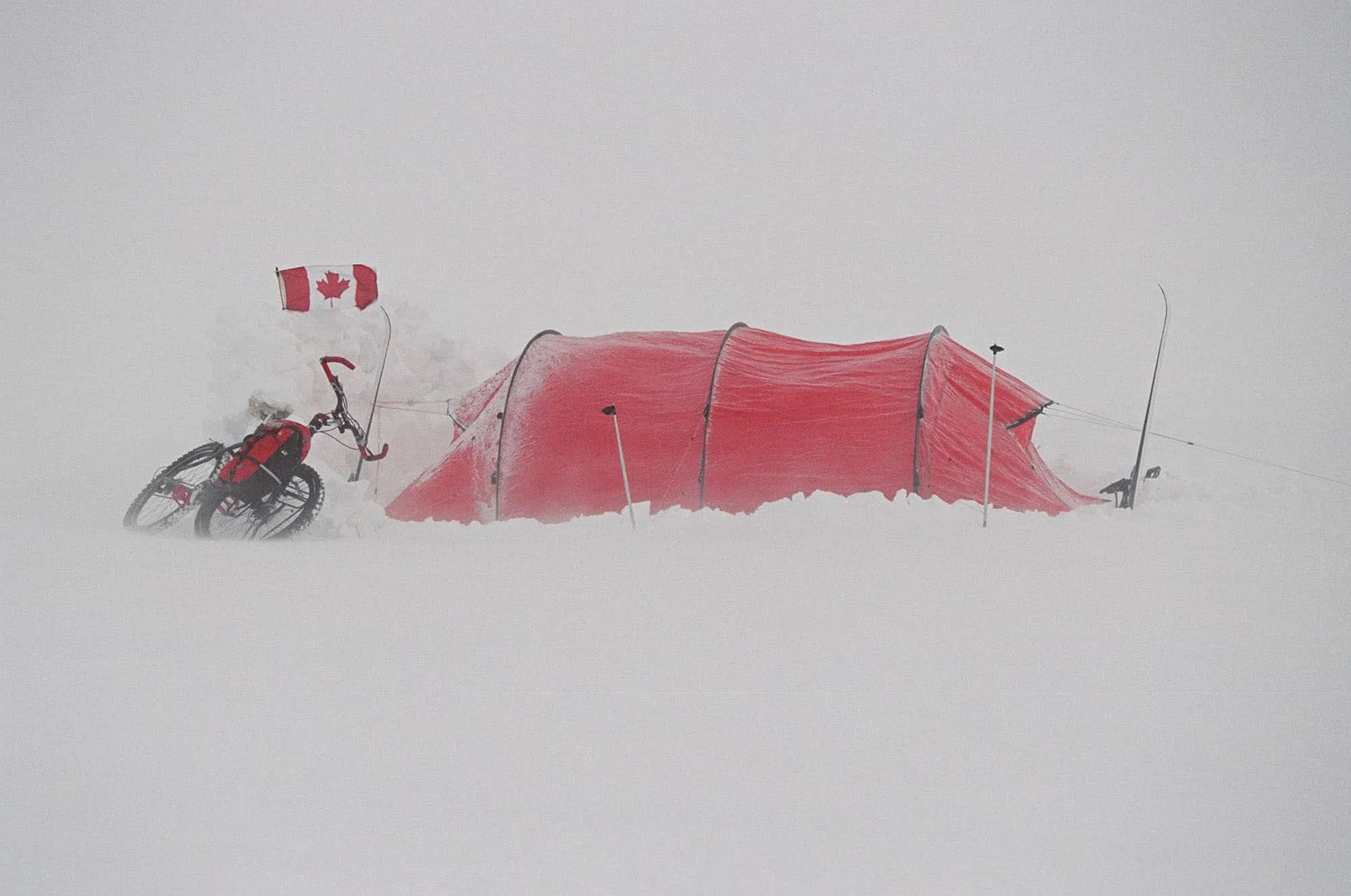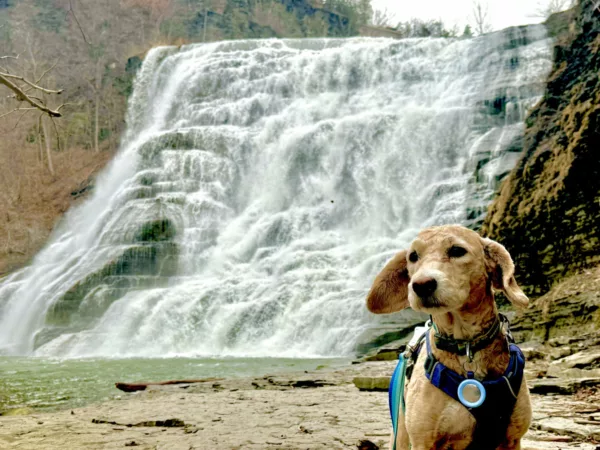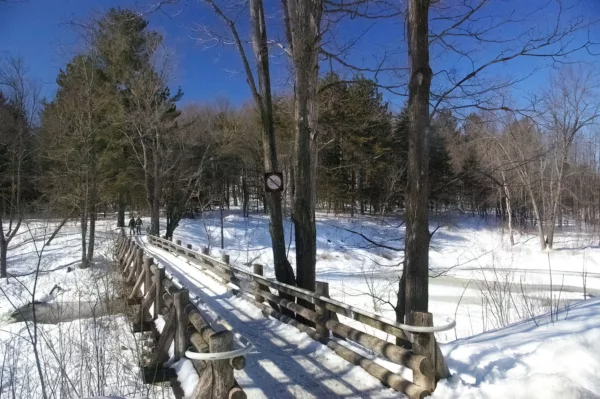Winter Bicycling Tips from Colin Angus
Riding your bike through the winter is a fantastic way to stay fit and motivated, but cold-weather riding poses some unique challenges. The mechanical properties of many materials transform when the mercury plummets, creating a topsy-turvy world where things don’t work as they should. I experienced this first-hand when I cycled thousands of kilometres through Siberia during the winter. Temperatures of -50 degrees Celsius were common. One of the towns we passed, Oymyakon, is the coldest town on the planet. Here, the average January temperature (without wind chill) is a staggering -46 degrees Celsius. Winnipeg, by comparison, averages a balmy -18 for the same month. Brrrrr.
At -50, all sorts of strange things happen to everyday items. The flat spots on a car’s tires—caused by parking—stay flat when you start moving, making it feel like you’re driving over never-ending speed bumps. Even starting a car is hard; a common strategy we saw in Oymyakon was to light a fire under the engine block until it was warm enough. Mercury thermometers are equally useless, because mercury turns solid at -38. Propane can’t be used, since it’s a liquid and not a gas at such temperatures and therefore won’t flow. Likewise, we discovered our Jetboil stove was impotent—no jet and no boil.
Bicycles are also transformed by the cold and without proper preparations you’ll get poor or non-existent performance. We substantially winterized our bikes for Siberia and these modifications allowed us to make steady progress for thousands of kilometres through intense cold. While winter temperatures across most of Canada generally aren’t as extreme as what we experienced in Northeastern Russia, it can get pretty chilly and similar modifications will help with winter riding in Canada.

Change the Pawl Grease
Pawls are small spring-loaded levers that are at the heart of your freewheel drive system. These little levers engage with an outer casing, allowing forward pedalling, while disengaging when you stop pedalling so the rotating rear wheel doesn’t force the pedals around like a tricycle. In extreme cold conditions, however, you may start having problems with your pawls. The grease in the unit becomes thicker and can inhibit the pawls from springing into position as they should. When this happens, forward pedalling no longer drives the rear wheel and the pedals spin uselessly. You can prevent this by stripping the heavier grease from the pawl-casing and replacing it with a lighter mineral oil.
Change Hydraulic Brake Lines to Cable
There are two reasons why hydraulic brakes cause problems in deep-freeze conditions. First, the hydraulic fluid thickens in the cold, making it harder to flow through the lines. Secondly, the valves and seals become hard and brittle, making them much more prone to failure. Changing your brake lines to cable systems will significantly reduce the chance of a catastrophic and hard-to-fix failure.
Lose the Suspension
Suspension simply doesn’t work well at extremely low temperatures. It becomes stiff and shock-absorbing capabilities are pretty much nonexistent. It’s no big deal to lock your suspension, but if you plan on doing a lot of winter riding it’s worth getting rid of the suspension so you’re not carrying a lot of unnecessary weight. The Norco Bigfoot bikes that we used in Siberia came with front suspension, which we removed and replaced with conventional forks, shaving significant weight. If you’re purchasing a bike that you plan on using for winter riding, keep this in mind. If you intend on riding on rough terrain, a much better alternative is to use a bike with fat tires, which serve the dual-purpose of providing shock absorption and offering broad footprints for loose snow and slush.

Tires
A bike without traction is useless. The two types of surface conditions we encountered in Siberia were loose soft snow and hard-packed snow and ice. Large balloon-like knobby tires are ideal for riding over loose snow. Just a few years ago, it was hard to use oversized tires because of the limitations of bike frames. However, there has been a sudden rise in popularity in fat-tire bikes and now there is an abundance of frames and rims available that can accommodate oversized tires. Fat tires inflated with relatively low pressure provide broad footprints that assist in keeping the tires from sinking into the snow.
Riding on ice and hard-packed snow requires a completely different strategy. Knobs simply don’t provide enough traction and riding is virtually impossible. Good studded tires, however, make all the difference. With studs, a cyclist can negotiate a freshly polished skating rink with the same ease as an asphalt parking lot. Studs are simply small, tack-like pieces of metal that protrude from the tire and bite into the ice, providing traction. Good studs can also be used on asphalt, so they can be utilized to maintain traction when you’re expecting a range of conditions. Often, winter riding is comprised of hard snow/ice and asphalt, so regular-sized studded tires can provide good service for the urban commuter. On the other hand, those who want to be prepared for Mother Nature’s full arsenal can now get studded fat tires, which allow you to keep going in deep snow, packed snow, ice and slush.
Clothing
Cycling can be very chilly, as we create wind by moving briskly forward. It’s important to be able to protect oneself from the wind, without inhibiting breathability. The biggest challenge in dressing for winter conditions is keeping condensation at bay. If airflow is compromised, dangerous condensation will start to happen. For a quick commute to work this isn’t such a big deal, as your ride will be completed before major problems start to occur—but for longer rides, it is an important consideration. In temperatures below -10, your outer layer does not need to be waterproof, since all precipitation is frozen and simply brushes off your jacket rather than melting. This means your outer shell can simply be a tight-woven fabric that cuts wind, but provides more breathability (helping reduce condensation) than typical waterproof-breathable membranes. In Siberia, our outerwear was comprised of Helly Hansen fleece that cut the wind with a tight outer polyester weave. The mid-layer should be a material that provides good insulation even when damp, such as fleece or wool. The ideal base layer is a material such as polypropylene that wicks moisture away from your body. And don’t forget your extremities. Baffin boots, rated up to -100 degrees Celsius, are good for keeping your feet warm, while puffy mitts with synthetic or hydrophobic down fill will keep your hands warm.














